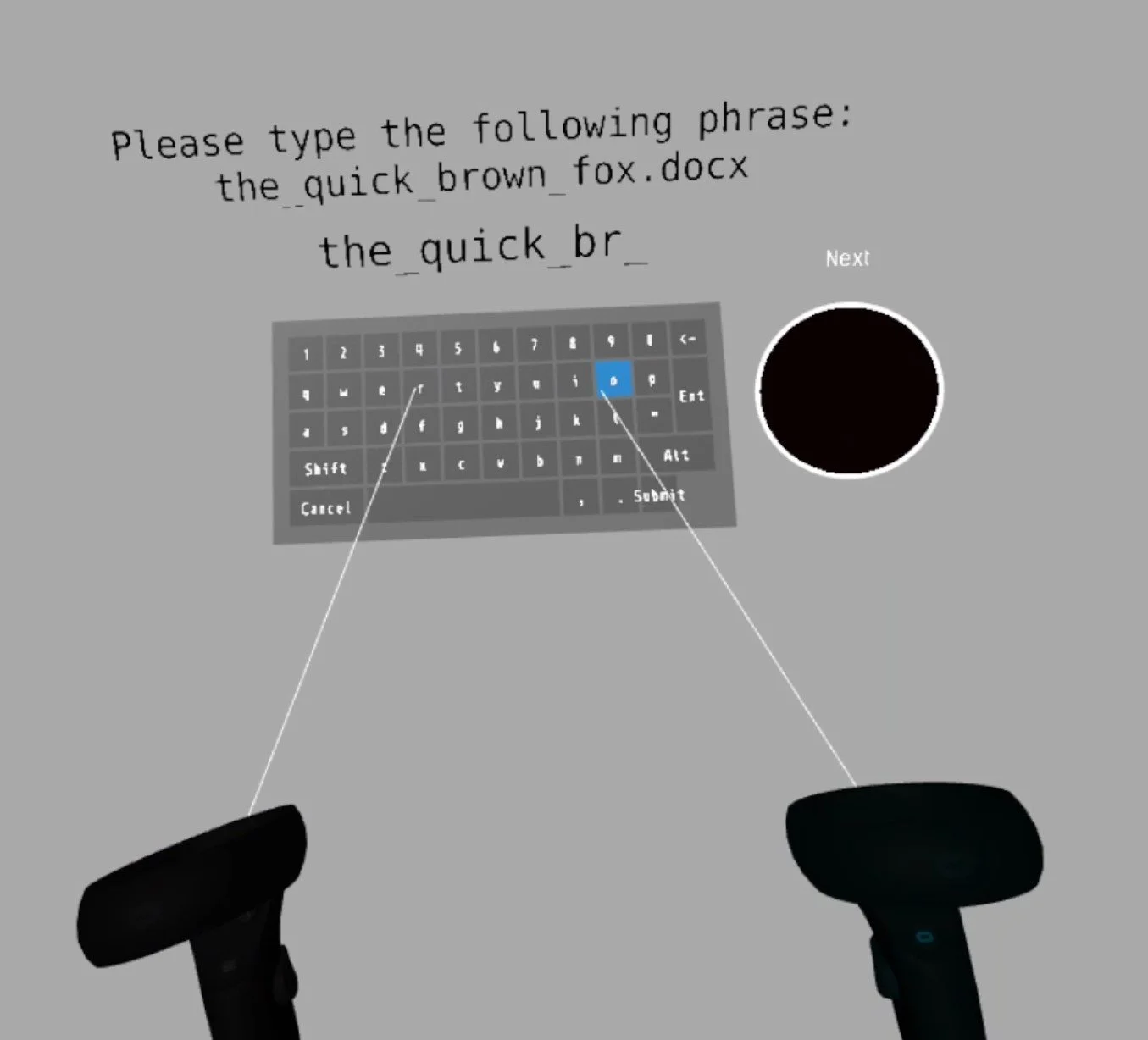VR text input
2021 / RESEARCH / SOFTWARE DEVELOPMENT / ACADEMIC WORKMy undergraduate dissertation investigates text input in virtual reality (VR) applications. As part of it, I researched the history of VR and designed an experiment to understand aspects of using a virtual keyboard in VR.
VR and why text input matters
VR as an idea has been around for around 100 years and has recently re-emerged as a consumer technology. Currently, it is mainly used for entertainment purposes, but there is an effort to make VR a more versatile and productive technology as well. This is where text input is important: For work, we write emails and notes, work on documents and spreadsheets, and in our spare time we chat and comment on social media.
Study design
I found research into different modes of text input including a variety of interaction modes with virtual keyboards. Some of the studies showed different (or no) parameters relating to the position of the keyboard in virtual space in relation to the participants, which prompted the question of whether the position has an impact on the user experience.
I decided to build a prototype in order to test short-form text input at different heights and depths and measure text input speed and accuracy, as well as user comfort. To be independent in testing I developed it in A-Frames, a Mozilla framework for using VR in HTML.
Results
Despite the small sample size clear trends emerged in the results. Participants did not favour any of the setups, although there was a slight upward trend in ease of use over time, indicating that they were getting used to the VR system and the test. The metric results clearly show a bias towards medium vergence though, with another increase in both speed and accuracy for keyboards at elbow height, which supposedly reduce physical strain.
